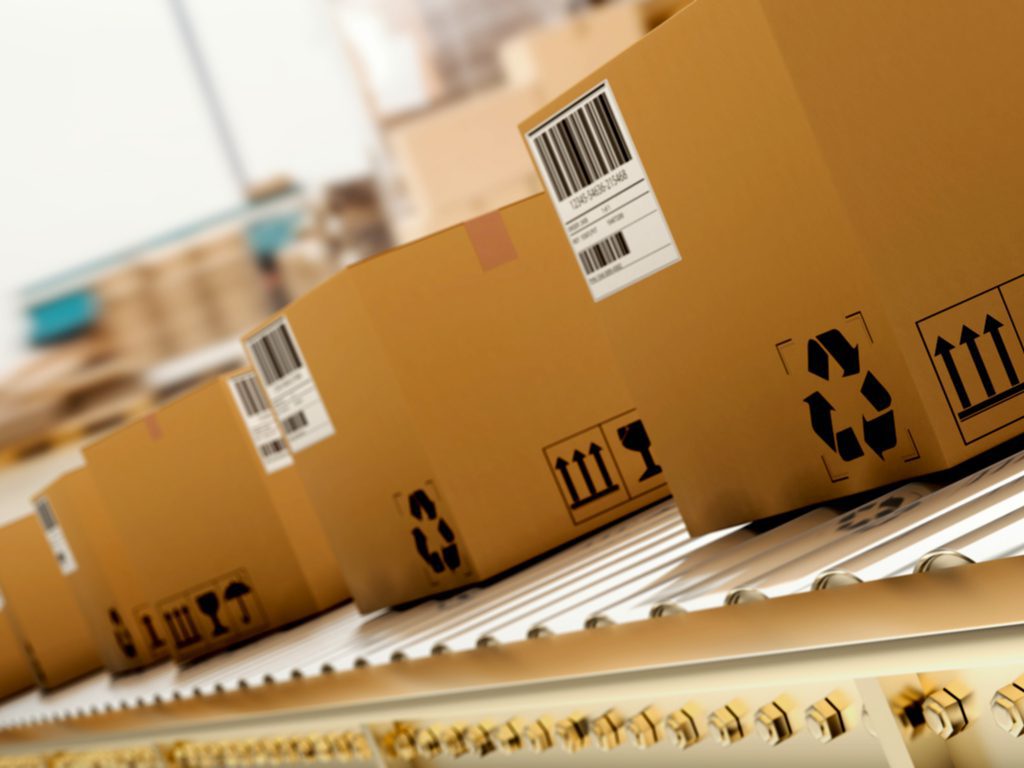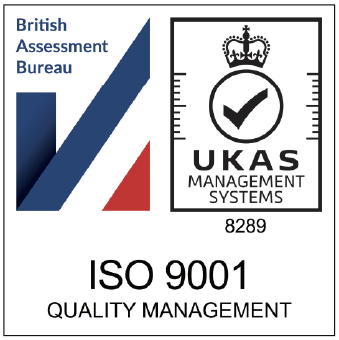Amazon Prime has turned the world of eCommerce (and logistics) on its head.
Today, there are over 200 million people across the globe subscribed to Amazon Prime. If you want a piece of this action, then you can do so by signing up to Seller Fulfilled Prime (SFP). Sure, you’ll gain access to a huge market of potential new customers. But, what are the pros and cons of SFP? And, what are the requirements? Keep reading and 3PL will tell you everything you need to know…
What is Amazon Seller Fulfilled Prime?
Let’s begin with defining what Amazon Seller Fulfilled Prime actually is. And, where better to get a definition than directly from Amazon themselves! Here’s how they describe SFP:
“Seller Fulfilled Prime is the Prime program that allows you to deliver directly to domestic Prime customers from your own warehouse. By displaying the Prime badge, you are committing to fulfil orders with approved Prime delivery carriers at no additional charge for Prime customers. Amazon gives you access to the right transportation solutions to help you meet the high bar for the Prime customer experience.”
It sounds relatively straight forward doesn’t it?
You (and your warehouse) effectively become part of Amazon’s supply chain. When someone buys one of your products on Prime, you receive the order and it’s up to you to fulfil it within Amazon’s stipulations, before handing it over to an approved carrier for shipping and delivery.
How does Amazon Seller Fulfilled Prime work for merchants?
Although we’ve outlined how Amazon SFP works above, it can be easier to understand the process when it’s broken down into 5 steps:
- You’ll need to qualify for Amazon SFP by completing a trial period (more on that later).
- You store your inventory in your own warehouse.
- Receive and process your orders as you normally would, and then buy shipping labels from Amazon’s approved shipping carriers.
- Pick, pack and ship your orders on the same day you receive them. You are not allowed any additional days for handling your inventory.
- You hand over the order to the Amazon-approved courier who then delivers the order to the customer.
As we say, it’s a straightforward process. So, what do you need to do to join Amazon Seller Fulfilled Prime?
What do you need to do to join Amazon Seller Fulfilled Prime?
There’s a good reason why Amazon Prime now has over 200 million subscribers worldwide – it works.
Amazon has put an enormous amount of effort into honing its supply chains so that it can consistently deliver orders to customers within two days. (It’s one of the reasons Amazon is often referred to as a logistics company rather than an eCommerce company).
But, because of this, if you want to join SFP, you have to meet some very stringent targets. For that reason, Amazon SFP isn’t for every type of eCommerce business.
If you want to decide for yourself, we’ve outlined Amazon’s SFP targets below:
- You are required to offer premium shipping options.
- Have an order cancellation rate of less than 0.5%.
- Meet one and two-day delivery targets.
- Over 99% of your orders must be shipped on time.
- Be able to provide nationwide delivery coverage for all normal-sized products.
- Use Amazon Buy Shipping Services for 99% of orders.
If those look intimidating, those are just the tip of the iceberg!
To join Amazon SFP you will also need to deliver all of your orders with Amazon’s Seller Fulfilled Prime carriers, allow all of your customer service inquiries to be dealt with by Amazon, use shipping methods that support weekend delivery and pick up, and you also have to agree to Amazon’s Returns Policy.
As you can see – Amazon Seller Fulfilled Prime certainly isn’t for every business!
Trial period
Oh, and did we mention you also have to complete a trial period?
Yes, that’s right. Amazon is so protective of the brand integrity that they’ve built up around ‘Prime’, that prospective SFP merchants are required to undertake a trial period and fulfill at least 200 Prime trial orders.
Amazon doesn’t say exactly how long the SFP trial period is – but feedback from multiple SFP merchants suggests that the trial can last anywhere between five and 90 days.
Whilst you are in this trial period, you will not be allowed to display the Prime badge on any of your items/products that are part of the trial. According to Amazon, during the trial you must process your orders with a ‘zero-day handling time’.
Should you pass your trial period, you will be automatically enrolled in Prime.
With all that in mind, you may still be weighing up whether or not Amazon Seller Fulfilled Prime is right for you. Sure, there are some pretty high hurdles to leap in order to join, but then you’ll have access to one of the world’s biggest marketplaces…
To help you decide, we’ve listed the pros and cons of Seller Fulfilled Prime below.
What are the pros of Amazon Seller Fulfilled Prime?
Aside from access to an enormous market of engaged consumers, Amazon SFP offers eCommerce businesses a wealth of other advantages.
Increased sales
With the Prime logo sat next to your enrolled products, you’ll increase the chances of making more sales. The Amazon Prime logo is instantly recognisable, and consumers know what to expect when they buy a product that’s listed as Prime. It’s a sign that you are a credible, reliable and trustworthy retailer.
The result will not only be a higher chance of conversion, but a higher volume of sales overall.
Cheaper than Amazon FBA
If you’re determined to sell your inventory on Amazon, then you may have also spotted another option called Amazon FBA. This option involves you having to store your inventory with Amazon and allow them to handle shipping – which can entail costly storage and fulfilment fees.
Because SFP allows you to store items in your own warehouse, it can work out being significantly cheaper.
Guide – you can find out more about Amazon FBA and other fulfilment options in our guide here.
More control than Amazon FBA
Another benefit of using Amazon SFP over Amazon FBA is that you retain greater control over your inventory and the fulfilment process. With FBA, your inventory sits in one of Amazon’s warehouses and you’re somewhat at their mercy.
With SFP you not only have much greater visibility and control over your inventory, but you can control things like the packaging, providing you with the opportunity to build your brand – not Amazon’s.
You can use Amazon’s 24/7 customer service team
One of the most time consuming and costly parts of eCommerce can involve dealing with customer queries or complaints.
Well, by joining Amazon Seller Fulfilled Prime, you eliminate this annoyance. This is because Amazon takes care of customer service enquiries on your behalf.
Amazon has a highly trained team of customer service advisors, operating on a 24/7 basis – that’s something you’re unlikely to be able to offer on your own.
So, those are the main benefits of joining Amazon Seller Fulfilled Prime. They’re pretty good, right?
But, there are some downsides to Amazon SFP. Keep reading to discover what they are.
What are the cons of Amazon Seller Fulfilled Prime?
Amazon is extremely protective of its Prime brand; which means strict regulations to adhere to. There are also some other issues around scalability and cost.
Maintaining eligibility can be a challenge
First and foremost, there’s the issue of ongoing eligibility. You see, you not only have to jump over some fairly high hurdles to qualify to join Amazon SFP, you have to continue to do so over the long term.
For many eCommerce businesses, this can be a challenge.
Amazon is keen to ensure that Prime remains the premium, flat-rate, express delivery service. So, this means that its requirements for SFP continue to be added to. If you cannot consistently meet these requirements, you will lose your Prime status.
This can have a big impact on your business – particularly if you have factored Prime sales into your revenue and cash flow forecast.
So, it’s vital that you really do think hard about whether you can maintain SFP status before you sign up to it.
Higher shipping rates
Prime comes at a price for merchants. Offering express one or two-day delivery means that you’ll likely be paying more for shipping than you’re used to. In addition, Amazon only uses a selection of approved shipping partners – so you don’t have the option to ‘shop around’ and find a cheaper shipping partner.
If you have slim profit margins on your products, the shipping fees associated with SFP can in some instances result in negative profits. So, do your maths before you sign up.
Scalability can be a challenge
Amazon Prime is a huge marketplace – so once you start selling there, the orders can quickly mount up.
Sure, that’s a good thing – more orders equals more money right?! Well, yes. But you need to also be prepared to ramp up your inventory management and fulfilment.
You’ll need to make sure you have sufficient stock and that you’ve got a well-designed fulfilment process in place. You’ll have to ensure you have a comprehensive strategy in place to cover events such as a huge spike in orders for a particular product. And what happens if some expected stock doesn’t show up? Or a large number of your packers call in sick? You need to be prepared for all eventualities.
Remember, if you fail to fulfil your orders within Amazon’s strict deadlines, you will lose your SFP status!
You are entirely responsible for your warehouse and inventory management
Successfully sign up to Amazon Seller Fulfilled Prime and Amazon will take care of your shipping for you – however, you’ll still be responsible for operating your warehouse and fulfilment.
Remember, Amazon requires you to be able to provide nationwide delivery coverage for standard sized products. This may mean that you need to open up further warehouses or relocate to a more central location (particularly if your inventory is currently located in a far-flung location).
Naturally, all of this can come with additional costs – so ensure you have figured out your inventory distribution to effectively meet Amazon’s strict fulfilment deadlines.
Use 3PL for your Amazon fulfilment
We hope you’ve found this guide to Amazon Seller Fulfilled Prime useful. If you’re still not sure which option is right for you, then why not talk to 3PL? We offer a range of Amazon fulfilment services that will power the growth of your business. Believe us – using a 3PL for your Amazon fulfilment can have a profound impact on the success of your eCommerce company.
Talk to 3PL about your Amazon fulfilment today
Find more advice for your eCommerce business on the 3PL blog…
How to Ship Products Using Amazon FBM | What Is Inventory Control? A Guide for eCommerce Retailers | Faults in Your Fulfillment Could Be Costing You Money. Here’s How to Fix It
Speak to 3PL about your order fulfiment
It’s time to supercharge your business and overtake your competitors. Speak to 3PL today and find out how we can take your ecommerce and B2B fulfilment to the next level.


